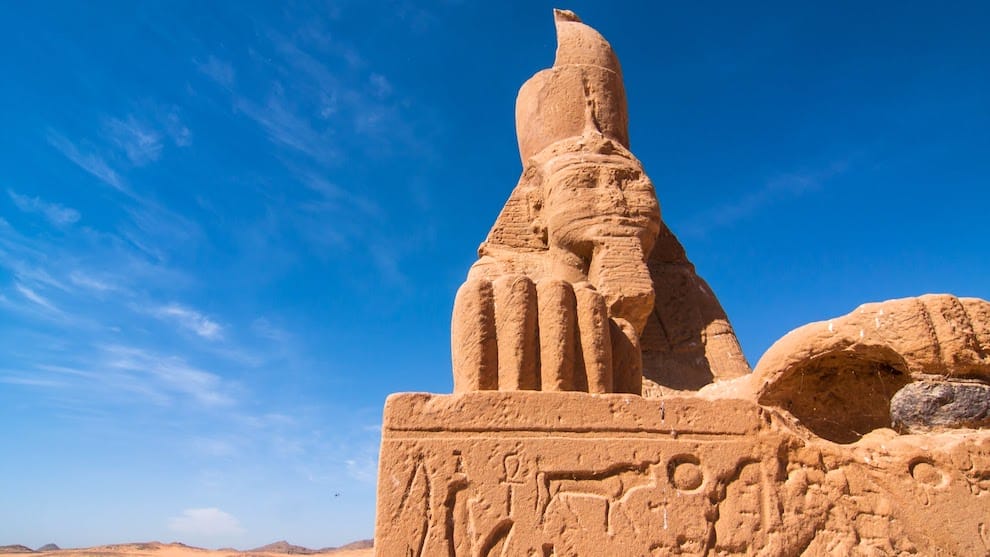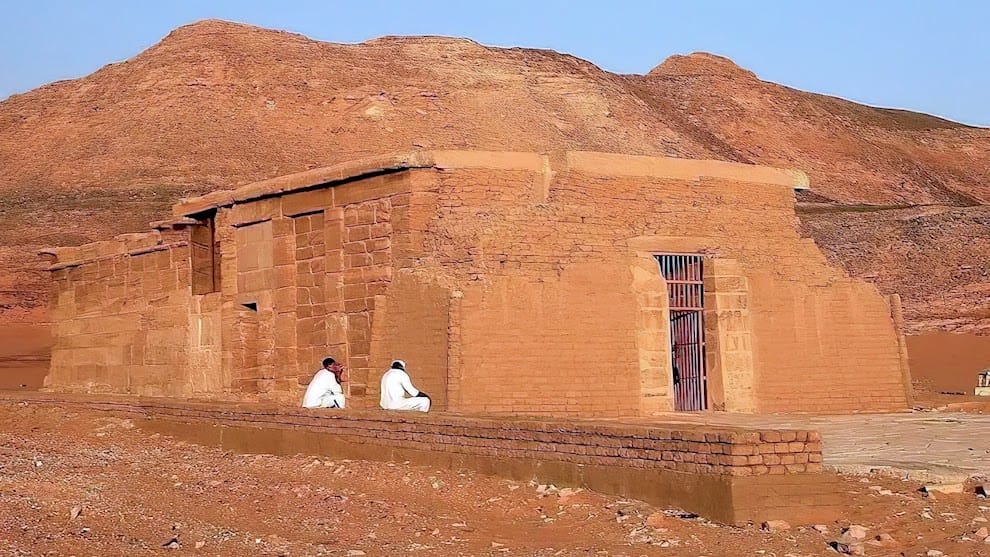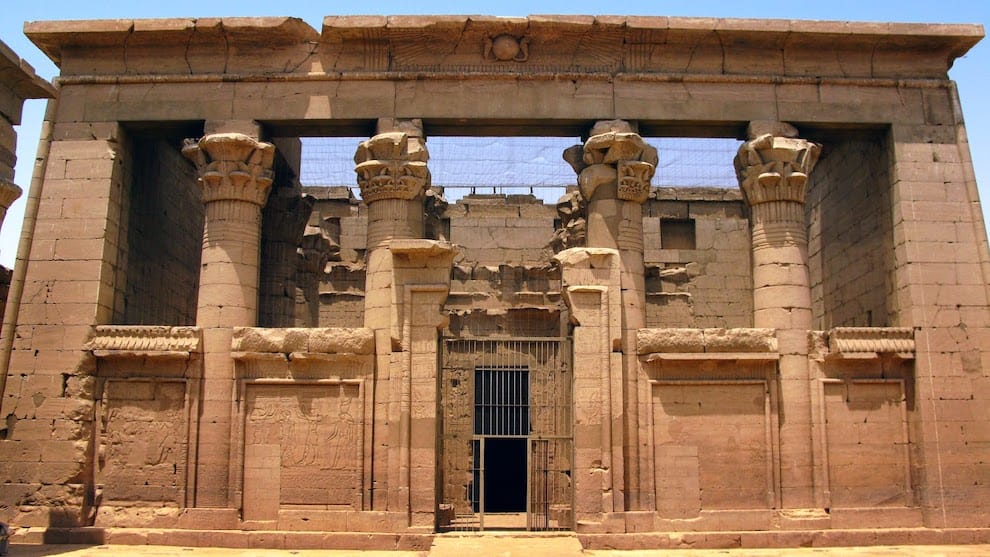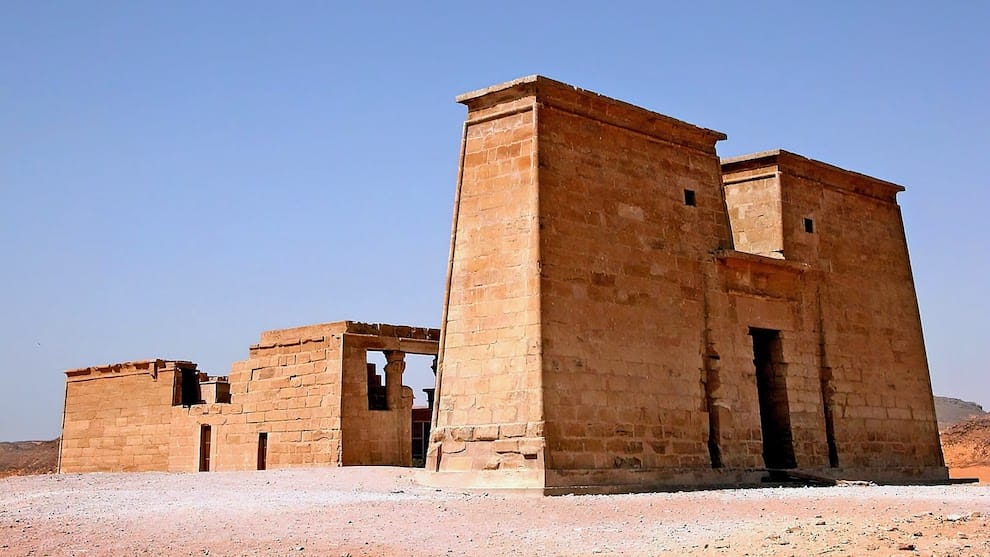Visitors to Egypt often spend a great deal of time in the Aswan area. Typically, it is to ensure they see the famed Abu Simbel site far south on Lake Nasser. Yet, it is not Abu Simbel alone that rates as a must see destination when in Aswan. There is also Wadi El Seboua.
Also close to Aswan and Lake Nasser, it is described by many as a home to rescued historical sites. Just as Abu Simbel and other well-known spots in the area like Philae were relocated to preserve them from the rising waters of Lake Nasser and the Nile, many historic sites in Wadi El Seboua were also relocated to spare them from loss.
WHAT YOU FIND IN WADI EL SEBOUA
The building of dams on the Nile (beginning with that near the First Cataract in the 1900s and then with the construction of the massive Aswan High Dam in the mid-1900s) led to flooding of many ancient sites. To save them from loss and destruction, the Egyptian government worked with different groups to relocate the most significant of these national treasures. Wadi El Seboua was selected as a home for a few of them, since the experts agreed that it would be easier and more efficient to group some sites in safe and well-chosen areas.
Travelers heading up the Nile and reaching Aswan or heading even farther to Abu Simbel can easily pay a visit to Wadi El Seboua and explore its treasures. It is home to a few impressive sites. They include two New Kingdom era temples and two additional later temples. These include:
THE TEMPLE OF WADI EL SEBOUA
Built by Amenhotep III, it was greatly damaged during the reign of the “heretic king” Akhenaten. Much of the original art and sculpture was altered to insert the sun god, Amun’s, image in place of the original god Horus. Ramses the Great (Ramses II) restored it to the greatest extent possible, but by his reign the skills of artisans had declined and could not match those of the original creators.
The damage to the Temple of Wadi El Seboua has even created a bit of an intellectual debate about the original dedication of the temple. Some feel it may have been dedicated to a Nubian god similar to Horus, but the destruction of the original art has made it impossible to verify.
The restoration done during the reign of Ramses II also extended and added to the original, including the element that gives the region its name (Valley of the Lions). Prior to this time, it featured a pylon, court, hall and sanctuary. Ramses II’s restoration added the avenue of sphinxes in front of the pylon among other elements.
THE TEMPLE OF AMUN
Another of the structures relocated to Wadi El Seboua is that of the Temple of Amun, which was also built by Ramses II to honor his many years of rule in Egypt. It recognizes and honors the Viceroy of Kush (Nubia) named Setau. There are monuments to him dotting the site and it was originally situated at the quay or stopping point for boats heading down the Nile. However, it was not made to the quality of earlier temples due to the lack of training in the workforce and the poor material options in that area.
However, it does still feature two courts heavily decorated, pillars and one of the three original pylons offering a grand entrance into the temple. Two were made of clay and degraded over time, leaving only the stone doorway remaining.
Also at Wadi El Seboua are from a later date in Egyptian history, and include:
The Temple of Dakka
Built around 220 BCE by a Nubian (or Meroitic) king to honor Thoth, it was a joint effort as it is believed to have also been influenced by the Ptolemaic pharaoh of the period. It is not original as it was also altered and expanded upon during the Roman period in Egypt, too. It features a great deal of Greco-Roman architecture and eventually found itself used as a Roman-era fortress.
However, it is a must see due to the condition of its stunning pylon that still serves as the main entry to the temple. Its north to south orientation is also unique among Nile monuments.
The Temple of Maharraqua
Last, but not least is the smallest temple in the Wadi El Seboua, the Temple of Maharraqua. There are many unanswered questions about this lovely structure. Unfinished, it was never fitted with a formal pylon and only the court was completed (as well as some of the outer walls). It is famous for its unique winding stair that leads from the court and to the rooftop of the temple. Scholars for centuries have tried to figure out why this unusual element appeared in a Nubian temple.
Left without any information relating to its designer, and without any dates explaining when it was built, most experts feel it is a Roman-era building dating to 14 CE. They point to the unique stairs and the need for a rooftop lookout as a distinctly Roman requirement. They also point to the location, which at the time was the southernmost border of Egypt during Roman rule.
PAYING A VISIT
Whether you head to this area specifically to tour the four sites, or you stop at the wadi as part of a tour of the region, it is easily accessible by water or land. In fact, many visitors are part of a Lake Nasser cruise though just as many people arrive by water taxi from Aswan (just 4km away).
There is no admission fee at the site, but to make the very most of its many wonders and mysteries, you should hire a knowledgeable and professional guide. There is so much to take in on the premises, it is far more rewarding to have an expert point out the many different features. And because this area is prone to high heat, be sure to dress accordingly, bring water and wear a hat and sunblock to ensure the best day possible.




